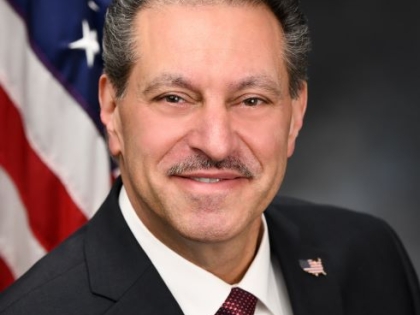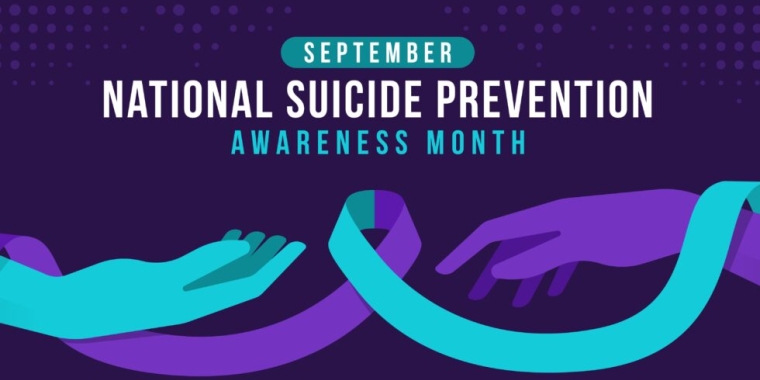
Addabbo Joins Experts to Discuss Suicide Prevention During This Designated Month of Awareness
September 17, 2025

September is Suicide Prevention Month.
In recognition of September as Suicide Prevention Month, Senator Joseph P. Addabbo, Jr. hosted a virtual educational event, bringing together experts to discuss mental health factors that cause so many people to take their lives every year, the warning signs, how to get help and how to help others.
“Suicide Prevention Month is a crucial reminder that mental health is health care,” Addabbo said. “Hosting events that foster open conversations, connect people to support, and share practical resources helps reduce the stigma and saves lives. By coming together as a community, we can ensure that no one faces a crisis alone and that help is reachable for those who need it most.”
The event took place via zoom on September 15, 2025, and the guest speakers were Candace Bravo, the Executive Director of the NYC Chapter of the American Foundation for Suicide Prevention, and Dr. Clancy Martin, author, professor, suicide survivor and preventer.
Since 1987, the AFSP has saved lives and brought hope to those affected by suicide through research funding, education, and advocacy. Dr. Clancy Martin is the author of the book, “How Not to Kill Yourself: A Portrait of the Suicidal Mind,” and teaches Philosophy at the University of Missouri-Kansas City. He has survived more than ten suicide attempts.
Dr. Martin said that survivors like himself have a great superpower – to be able to help others by sharing first-hand experiences of having tried to take their own lives. He said that people have the power to kill themselves, but they also have the power to save themselves, even if it’s just choosing to postpone suicide for one day because that’s one more day to live, to get out of the space of wanting to die, and to avoid making a mistake that can’t be reversed.
Suicide is almost always in the top ten leading causes of death worldwide, according to Martin. He added: “I think almost everyone will consider suicide seriously at some point in their lives. Life is just so darn hard so much of the time. I tell my students if we all had a switch on our bellies that we could just flip and turn off our or own personal existence, probably a lot of us wouldn’t make it to age 18.”
Martin noted that reducing suicide involves taking away stigma, boosting awareness, and openly treating suicide as a mental health issue. He explained that talking about suicide matters because reaching out to another person reminds individuals that their life has value, that they are not alone, that pain is a common human experience, and that they are needed.
Dr. Martin advised that when supporting someone who may be suicidal, start by establishing trust. Practice deep listening—trying to feel the person’s pain and acknowledge that it is real. He said not to shy away from asking the person directly if they are having suicidal thoughts, for fear of “planting a seed,” that is a myth, he said. Share a personal story of struggle if appropriate and encourage movement—walking and talking—to help the person exit a panicky, claustrophobic space, he said.
During the presentation, by AFSP, Bravo covered many important topics and included several kinds of resources where people can get help. She said that many people who die by suicide have a mental health issue at the time of their death, but most people with mental health issues do not commit suicide.
According to Bravo and the AFSP, suicide is the leading cause of death in the U.S. Each year, millions of people think about suicide. There are well over a million people in the U.S. each year who survive a suicide attempt and most people have been affected by suicide in some way.
Contributing factors to suicidal behavior, Bravo said, include depression, bipolar disorder, psychosis, personality disorders, eating disorders, substance abuse, physical health conditions like chronic pain, a family history of mental illness or suicide loss, childhood trauma like abuse or neglect, traumatic brain injury and genetics.
Taking steps to help a potentially suicidal person, according to the AFSP includes looking for warning signs, reaching out and having a conversation, keeping the environment safe, meaning keeping lethal means like guns out of the home or securely locked in a safe, and connecting to help and resources like the calling the 988 hotline, texting TALK to the Crisis Text Line at 741741 or going to the emergency department at the local hospital. For more information visit afsp.org
Share this Article or Press Release
Newsroom
Go to Newsroom
